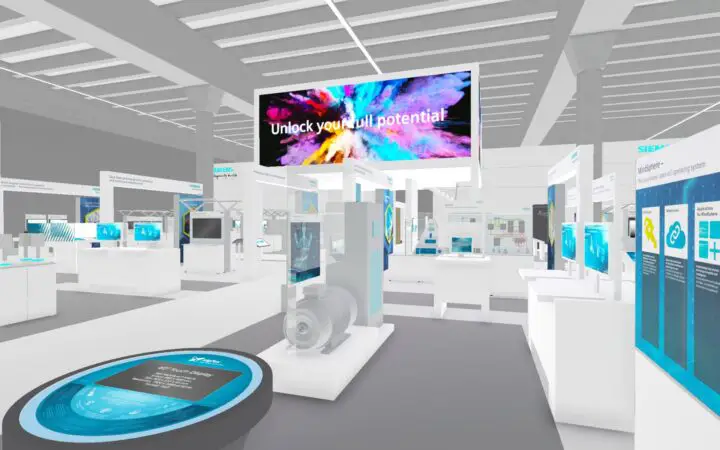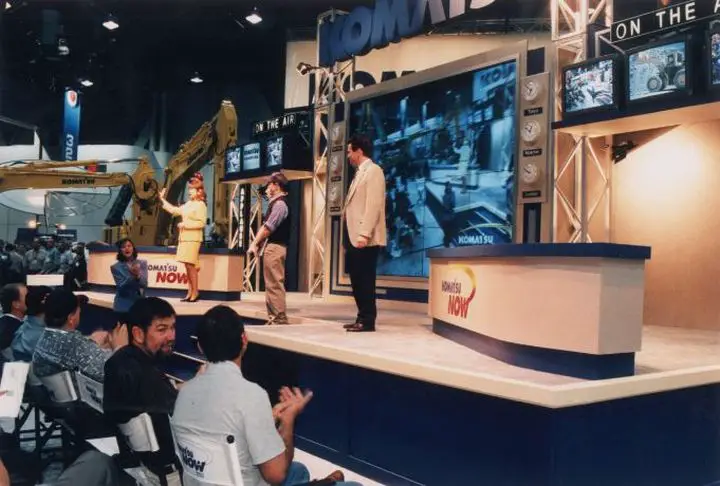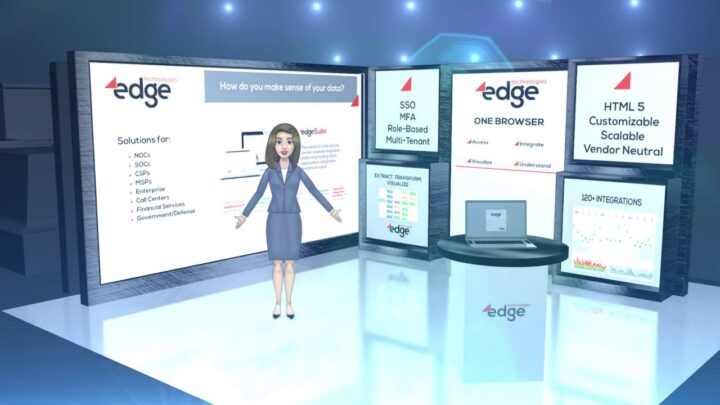The Impact of Technology in the Trade Show Industry

Did you know that modern-day trade shows draw their roots from medieval times, when merchants, farmers, and craftsmen would travel long distances to busy cities to put their best merchandise on display? Of course, trade shows that evolved a lot since then, and now they’ve become these exciting spectacles where brands compete for the audiences’ attention with interactive marketing tools and smart presentation techniques. Most of this was made possible thanks to technology and, as you’ll read below, it was only through technology that the trade show industry was able to thrive and become the billion-dollar giant it is today.
From the first event apps to today’s exciting virtual booths, here’s how digital technologies shaped the trade show industry:

Event apps – the greener and leaner way to communicate with audiences
For decades, trade shows have relied on printed materials to communicate with audiences. For example, an attendee would take a printed leaflet with the schedule of the event and the floor layout, and exhibitors would generously hand out brochures and fliers with their offer to anyone who passed by their booth. While paper is still in use today, it’s no longer the go-to way to communicate. Firstly, because it’s wasteful and unsustainable, and secondly, because it’s not the best at retaining the visitors’ attention.
When smartphones started to become mainstream, events apps became the preferred way for organizers and exhibitors to inform and attract visitors. Nowadays, just about every professional who attends a trade show has a smartphone, and this motivates organizers to develop their own apps, which are much better than leaflets at keeping people up to date. For example, attendees can scan a QR code upon arrival to download the app, and open it to see the plan of the building and the schedule for each day. They can see where each exhibitor booth is, and this way they know they’re not missing anything. Convenience was rated by event professionals as the top benefit of event apps, and at this point printed materials have become outdated.
At the same time, organizers can use the app to send push notifications when there’s a delay or a change in schedule. Trade show apps also serve as a marketing tool because exhibitors can use them to invite passersby to their booth, thus maximizing engagement and ROI. Of course, this also comes with the pressure of writing creative, relevant, and engaging calls to action but, in general, apps are much more versatile and personalizable than printed materials.

Interactive presentation tools
Catching your audience’s attention is easy. Maintaining it can be a challenge. Amidst the hustle and bustle of a trade show, the visitors’ attention is constantly split between booths. There’s always something exciting happening somewhere, and exhibitors are constantly competing to keep audiences engaged. Some time ago, this was achieved by having the flashiest, most impressive booth design and charismatic brand ambassadors who also happened to be fantastic salespeople. These requirements are still around today – you won’t impress anyone with a default booth design and a bored brand ambassador who’s just reading the script off a clipboard. However, these are now the baseline requirements because, apart from them you also need state-of-the-art presentation tools to keep the audience engaged. And, since technology has been advancing at a rapid pace, this means you can now witness some impressive presentations at trade shows:
- Immersive videos and panoramic tours. These allow exhibitors to explain how their products work in a creative way. Compared to regular PDFs and spec sheets, they’re more fun to watch for audiences. They’re also affordable to create, and work for just about any industry.
- VR and AR. Undoubtedly the most futuristic way of showcasing your business, AR and VR presentations attract crowds during trade shows and make a lasting impact on audiences. Combined with traditional marketing methods, they deliver great ROI and boost engagement rates. Their only drawback is that they’re expensive to make and you need to start developing them months in advance to allow enough time for testing.
Virtual booths – the next big step in trade show marketing

If you’re an event professional, or simply someone who attends lots of trade shows, you’re probably familiar with the applications mentioned above. You’ve probably not interacted with them in a while either, because the trade show industry was put on hold due to the COVID-19 pandemic.
When the first lockdowns were announced in Western Europe, and major trade shows were canceled, everyone believed that the entire industry would crash, since so much of the trade show experience relied on face-to-face interactions. However, the industry did not crash. Instead, it transformed and it was pushed into a new era of digital evolution. According to many events professionals, the innovations achieved from March 2024 onwards revolutionized the industry and created opportunities that weren’t possible before.
Perhaps the best example in this regard is virtual booths – digital representations of trade show booths, which audiences can explore at their own pace from the comfort of their home. Virtual booths managed to capture the magic of trade shows in the digital space, offering the same engagement and ROI, at a significantly lower cost. Initially, virtual booths were displayed only during virtual trade shows but, as many exhibitors noticed, the format of virtual events is often too restrictive and doesn’t offer a pleasant enough user experience. But later, exhibitors discovered that they can create their own virtual booths and host them on their website or on third party services, and benefit from exposure all year round. It’s a fantastic use of technology, and it shows that brands don’t need to be physically present at a trade show to be connected to their audiences.

And the more interesting is that virtual booths are unlikely to go away once the pandemic is over. Digital transformation has triggered a major paradigm shift in the industry and exhibitors have realized that trade shows don’t need to be expensive. Going forward, we can expect exhibitors to reduce the number of brick-and-mortar shows they attend and then rely on virtual booths for the rest of the year.
